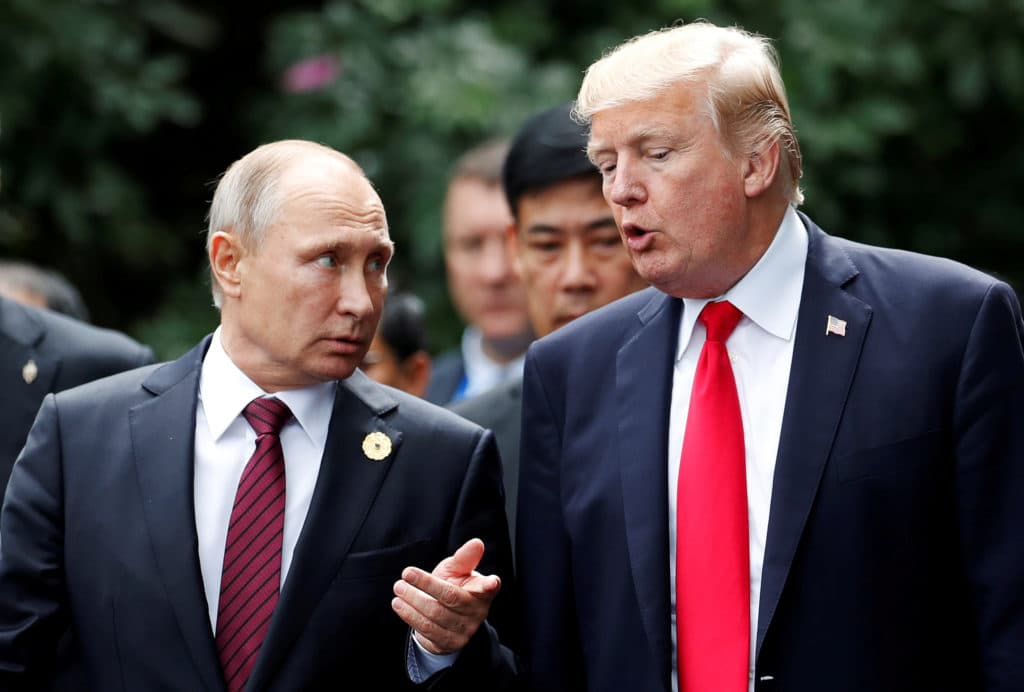In a striking departure from his usually restrained diplomatic tone, U.S. President Donald Trump publicly criticized Russian President Vladimir Putin on Monday after Moscow announced that it had successfully tested a nuclear-powered cruise missile. The weapon in question, known as the 9M730 Burevestnik and referred to by NATO as SSC-X-9 Skyfall, has been described by Russian officials as a nuclear-capable missile with a potentially unlimited range. The test, which reportedly took place on October 21, has drawn significant international attention and concern.
Trump’s Uncharacteristic Rebuke
Speaking to reporters aboard Air Force One on his way to Japan, Trump rebuked Putin for what he portrayed as a reckless demonstration of military power while the war in Ukraine continues. “You ought to get the war ended, the war that should have taken one week is now in its fourth year,” Trump said. “That’s what you ought to do instead of testing missiles.” His comment marked one of the rare occasions in which Trump directly and publicly confronted Putin on military matters.
The president’s tone reflected growing frustration in Washington as the conflict in Ukraine enters its fourth year. By pointing out that the United States already has a nuclear submarine “right off their coast,” Trump implied that America does not need long-range missile tests to prove its military strength. The remark also sought to undercut Russia’s narrative that its new missile technology represents a game-changing advancement.
Russia’s Claims of a Breakthrough
According to Russian defense officials, the Burevestnik missile traveled approximately 14,000 kilometers, or about 8,700 miles, and remained airborne for 15 hours during the October 21 test. President Putin hailed the weapon as “a unique product which no one else in the world has.” He added that it can maneuver both vertically and horizontally and is designed to evade existing missile defense systems.
Russian authorities have framed the Burevestnik’s development as a necessary response to NATO expansion and to what they view as the erosion of strategic stability following the U.S. withdrawal from several arms control agreements. They also present it as a deterrent meant to bypass Western missile shields, which Russia sees as undermining its nuclear deterrence.
Western Skepticism and Safety Concerns
Western defense analysts remain deeply skeptical about Russia’s claims. While the Kremlin portrays the Burevestnik as a technological triumph, experts question whether the missile’s nuclear propulsion system is operational or safe. Previous attempts to test the weapon have been linked to technical failures, including a 2019 explosion that killed several Russian scientists and caused radiation leaks in the region. These incidents highlight the potential environmental and humanitarian risks associated with developing such a system.
Analysts argue that even if the missile functions as claimed, its strategic value may be limited. A nuclear-powered propulsion system could, in theory, allow for extended range and unpredictable flight paths, but such features also raise enormous safety and logistical challenges. For many observers, the test serves more as a political message of defiance toward the West than as proof of a new military capability.
Implications for Global Security
Trump’s criticism and Russia’s test come at a delicate moment for international security. The war in Ukraine has already intensified tensions between nuclear powers, and any new developments in advanced weapons technology carry global implications. The Burevestnik test underscores how closely the conflict is now intertwined with broader questions of nuclear deterrence and strategic competition.
For NATO and the United States, the missile test revives debates about missile defense, deterrence, and the possibility of a renewed arms race. It also raises the question of whether existing arms control frameworks are sufficient to manage emerging technologies that blur the lines between conventional and nuclear capabilities. Trump’s call for Putin to end the war rather than showcase new weapons can be seen as both a political maneuver and a signal that Washington may adopt a tougher line on Moscow.
A Test of Power and Perception
Beyond its technical aspects, the episode is a vivid reminder of how modern nuclear strategy relies as much on perception as on performance. The Burevestnik’s true capabilities remain unverified, yet its symbolism is powerful. By claiming to have mastered a technology that defies current defense systems, Moscow reinforces the image of a state willing to push the limits of deterrence and technological risk. Washington’s response, in turn, reflects the persistent struggle to balance deterrence with diplomacy.
Looking Ahead
It remains to be seen whether independent verification will confirm Russia’s claims about the missile’s performance. The coming months will likely reveal whether Moscow intends to operationalize the Burevestnik or continue using it primarily as a strategic signaling tool. On the diplomatic front, Trump’s unusually sharp rebuke could complicate future engagement with Russia but might also prompt renewed discussion about arms control agreements that have eroded in recent years.
What is clear is that Moscow’s high-profile missile test and Washington’s pointed response illustrate how deeply nuclear ambition, war, and geopolitics are now intertwined. As the conflict in Ukraine continues, the boundaries between battlefield tactics and strategic deterrence appear increasingly blurred.
Sources: Reuters, The Washington Post, Time
Note: All information in this article is based on verified public data and credible sources available at the time of writing.
